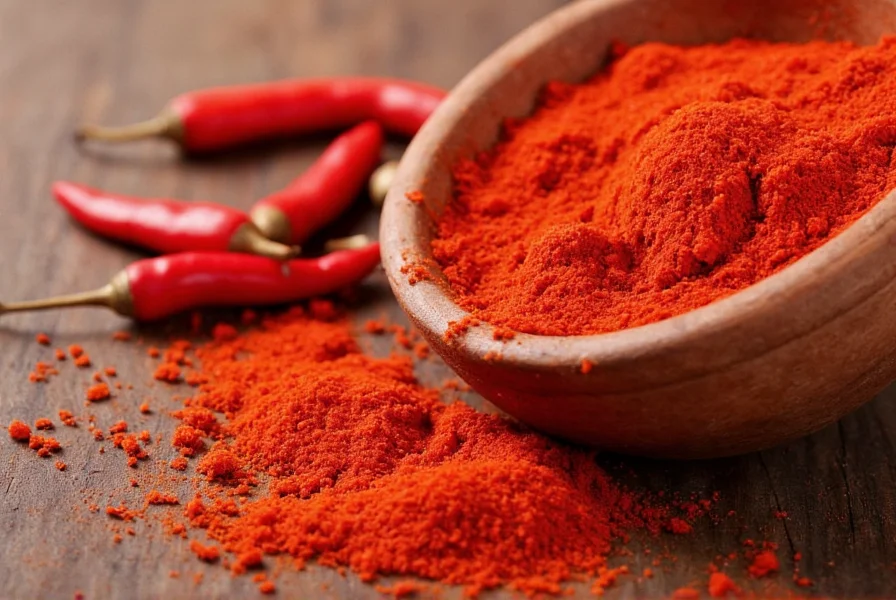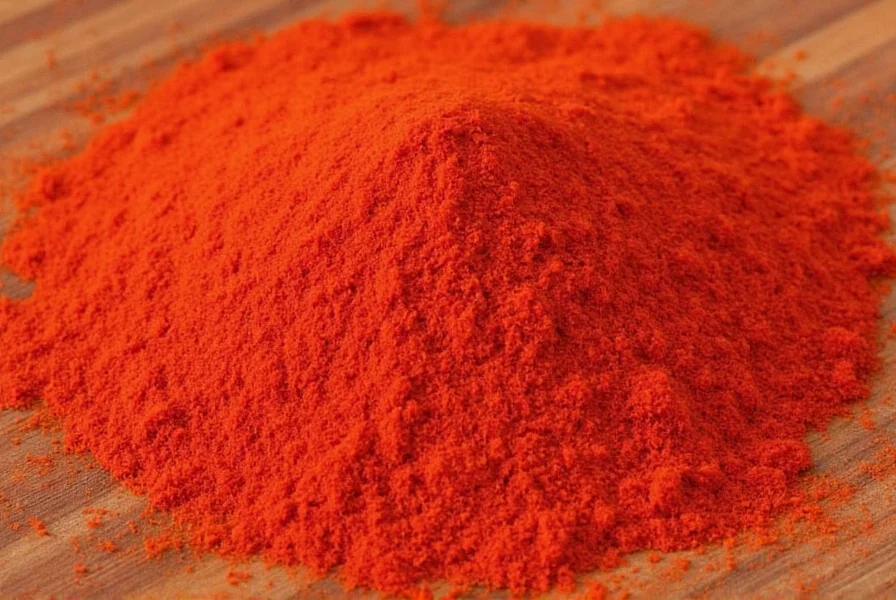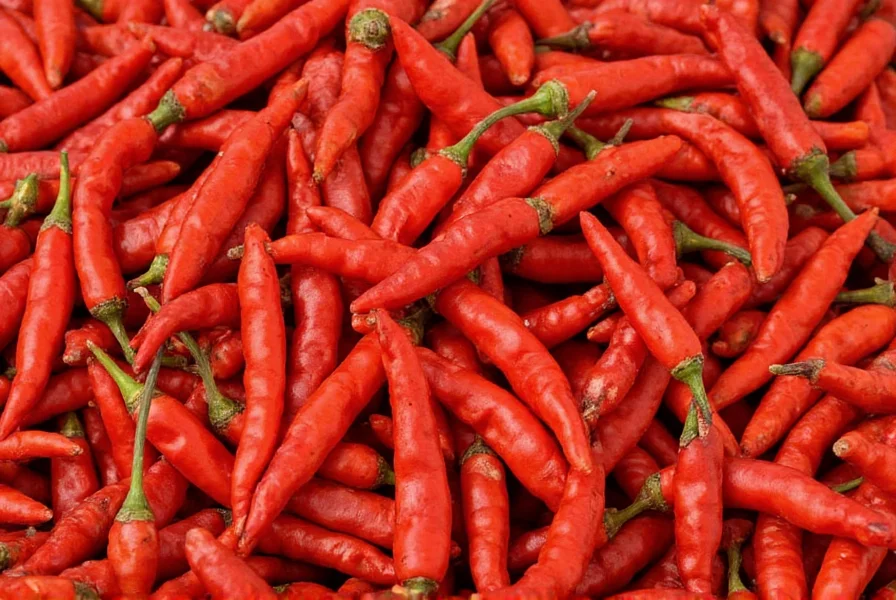Cayenne pepper spice has earned its place as both a kitchen staple and wellness ally for centuries. This vibrant red powder, made from dried and ground ripe cayenne peppers, contains capsaicin—the compound responsible for its characteristic heat and many health-promoting properties. Understanding how to properly incorporate this powerful spice can transform your cooking and potentially enhance your wellbeing.
What Exactly Is Cayenne Pepper Spice?
Cayenne pepper spice comes from specific cultivars of Capsicum annuum that mature to a bright red color. Unlike generic "red pepper flakes" which may contain various pepper types, authentic cayenne pepper spice maintains consistent heat levels between 30,000-50,000 Scoville Heat Units (SHU). This places it significantly hotter than jalapeños (2,500-8,000 SHU) but milder than habaneros (100,000-350,000 SHU).
The finest cayenne pepper spice originates from regions including Central and South America, India, and parts of Africa where ideal growing conditions produce peppers with optimal capsaicin concentration. When selecting cayenne pepper spice, look for products labeled specifically as "cayenne" rather than generic "hot pepper powder" to ensure consistent quality and heat profile.

Nutritional Profile and Key Components
Cayenne pepper spice packs impressive nutritional density in small quantities. Just one teaspoon (2 grams) provides:
| Nutrient | Amount per Teaspoon | Daily Value % |
|---|---|---|
| Calories | 6 | 0% |
| Vitamin A | 44% | 44% |
| Vitamin C | 6% | 6% |
| Vitamin B6 | 5% | 5% |
| Manganese | 3% | 3% |
| Capsaicin | 0.1-0.5% | N/A |
The star component, capsaicin, constitutes approximately 0.1-0.5% of dried cayenne pepper by weight. This bioactive compound interacts with TRPV1 receptors in the body, triggering the sensation of heat while initiating various physiological responses that contribute to cayenne pepper spice health benefits.
Evidence-Based Health Benefits
Research supports several health benefits associated with moderate cayenne pepper spice consumption:
Metabolic Support and Weight Management
Studies published in Appetite journal indicate that capsaicin may increase energy expenditure by approximately 50 calories per day and reduce appetite. When incorporated as part of balanced dietary approaches, cayenne pepper spice for weight loss shows promise through thermogenesis—the body's heat production process that burns calories.
Pain Relief Mechanisms
Capsaicin works as a counterirritant by initially stimulating then desensitizing nerve receptors. Topical creams containing 0.025%-0.075% capsaicin have demonstrated effectiveness for osteoarthritis and neuropathic pain according to research in the Cochrane Database of Systematic Reviews. Consuming cayenne pepper spice may also help alleviate migraine headaches for some individuals.
Cardiovascular Health Support
Regular consumption of cayenne pepper spice shows potential cardiovascular benefits including improved blood circulation and possible blood pressure regulation. A study in Cell Metabolism suggested capsaicin activates pathways that may help prevent vascular damage, though more human research is needed.
Culinary Applications and Pairing Suggestions
Cayenne pepper spice enhances dishes beyond mere heat. Understanding how to use cayenne pepper in cooking properly prevents overwhelming other flavors while maximizing its culinary potential.
Temperature Considerations
Capsaicin dissolves better in fats and alcohol than water, which explains why dairy products effectively cool spicy foods. When cooking with cayenne pepper spice, incorporate it early in oil-based dishes to distribute heat evenly, or later in water-based preparations to preserve more intense heat.
Flavor Pairing Guide
Complementary flavors balance cayenne's heat while enhancing overall complexity:
- Sweet elements: Honey, maple syrup, or fruit preserves counterbalance heat
- Acidic components: Lime juice or vinegar brighten spicy dishes
- Fats: Coconut milk or avocado mellow intense heat
- Earthiness: Cumin and smoked paprika create depth with cayenne
For beginners exploring cayenne pepper spice vs red pepper flakes, note that cayenne delivers cleaner, more consistent heat while red pepper flakes often contain seeds and varying pepper types resulting in unpredictable spiciness.
Safety Considerations and Potential Side Effects
While generally safe as a culinary spice, cayenne pepper requires mindful consumption:
Digestive Sensitivity
Excessive consumption may cause stomach irritation, heartburn, or diarrhea in sensitive individuals. Start with small amounts (1/8 teaspoon) when incorporating cayenne pepper spice into your diet, gradually increasing to assess tolerance.
Medication Interactions
Cayenne pepper spice may interact with blood thinners like warfarin due to potential antiplatelet effects. Those taking ACE inhibitors for blood pressure should consult healthcare providers before consuming cayenne pepper spice in medicinal quantities.
Topical Application Precautions
When handling concentrated cayenne products, wear gloves to prevent skin irritation. Avoid contact with eyes and sensitive areas. If using topical capsaicin creams, follow product instructions carefully regarding application frequency and amount.

Selection and Storage Best Practices
Maximize freshness and potency of your cayenne pepper spice with these guidelines:
- Purchase considerations: Choose deep red powder (dull color indicates age), check for harvest dates when possible
- Container selection: Opt for opaque containers to protect from light degradation
- Storage method: Keep in cool, dark place away from heat sources like stoves
- Shelf life: Properly stored cayenne pepper spice maintains potency for 2-3 years
Test freshness by rubbing a small amount between fingers—if the aroma remains strong and heat sensation immediate, the spice retains quality. Dull color, weak aroma, or diminished heat indicate it's time for replacement.
Frequently Asked Questions
What's the difference between cayenne pepper spice and chili powder?
Cayenne pepper spice consists purely of ground cayenne peppers, delivering consistent heat (30,000-50,000 SHU). Chili powder typically blends cayenne with other peppers, cumin, garlic powder, and oregano, resulting in milder heat (1,000-2,500 SHU) and more complex flavor. For precise heat control, use cayenne pepper spice; for traditional chili flavor, choose chili powder.
How much cayenne pepper spice equals one fresh cayenne pepper?
One medium fresh cayenne pepper (approximately 6 inches long) yields about 1.5 teaspoons of dried, ground cayenne pepper spice. When substituting, start with 1/4 teaspoon dried spice per fresh pepper and adjust to taste, as dried spice concentrates the capsaicin content.
Can cayenne pepper spice help with sinus congestion?
Yes, cayenne pepper spice may temporarily relieve sinus congestion through capsaicin's ability to stimulate mucus clearance. Adding 1/8-1/4 teaspoon to hot tea or broth can help open nasal passages. However, this effect is temporary and shouldn't replace medical treatment for chronic sinus issues. Those with sensitive stomachs should use caution.
Is cayenne pepper spice safe during pregnancy?
Culinary amounts of cayenne pepper spice are generally considered safe during pregnancy. However, medicinal quantities (supplements or large therapeutic doses) aren't recommended without healthcare provider approval. Some women experience increased heartburn sensitivity during pregnancy, so adjust usage based on personal tolerance.
Does cayenne pepper spice lose potency when cooked?
Capsaicin remains stable during cooking but distributes differently based on preparation method. In oil-based dishes, adding cayenne pepper spice early allows heat to distribute evenly. In water-based preparations like soups, adding it later preserves more intense heat. While the compound doesn't degrade significantly with heat, prolonged cooking may mellow the perceived heat level as it integrates with other ingredients.











 浙公网安备
33010002000092号
浙公网安备
33010002000092号 浙B2-20120091-4
浙B2-20120091-4